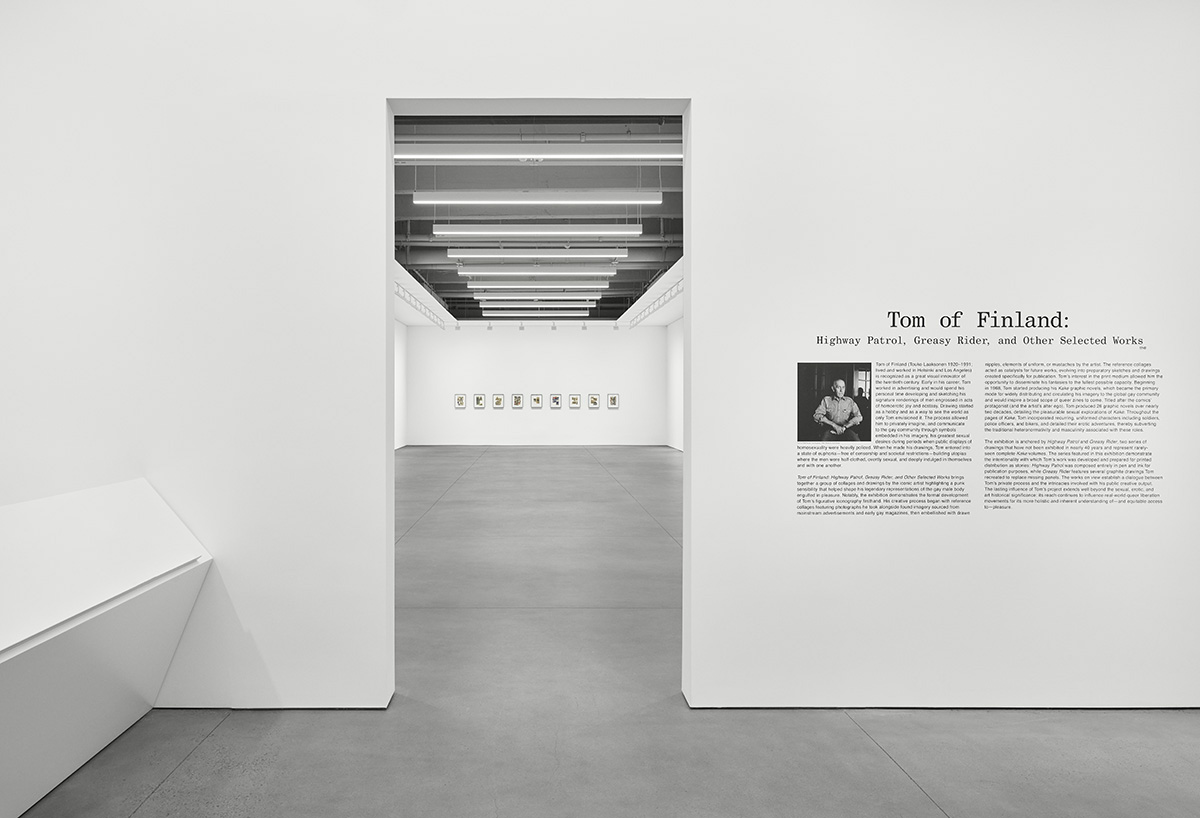Tom of Finland
Highway Patrol, Greasy Rider, and Other Selected Works
David Kordansky Gallery, New York
January 13–February 25, 2023
January 13–February 25, 2023

Photo: Jeff McLane, courtesy of
David Kordansky Gallery, New York
David Kordansky Gallery, New York
January 13–February 25, 2023
January 13–February 25, 2023
We’re in the decade of Tom of Finland. From the major 2015 exhibition at Artists Space in New York City to Dome Karukoski’s 2017 biopic Tom of Finland, the legendary erotica artist has enjoyed renewed visibility and critical appraisal. A new exhibition at David Kordansky Gallery in New York asserts his central role as a forebear to twentieth-century queer visual cultures. Situating his work in a longer genealogy of vernacular queer comics and graphic novels, the show proposes to illuminate “the formal development of Tom’s figurative iconography firsthand.”
The stars of the show are two graphic narratives that feature Tom’s recurring character Kake: Highway Patrol (1980), which depicts a biker and two police officers knocking leather boots together, and Greasy Rider (1978), an equestrian-themed romp. In order to demonstrate how Tom drafted his erotic utopias, the show is bookended by a series of preparatory sketches and by reference collages that allude to the underground and mass-cultural sources of his visual language.
Create your free profile or log in now to read the full text!
My Account


